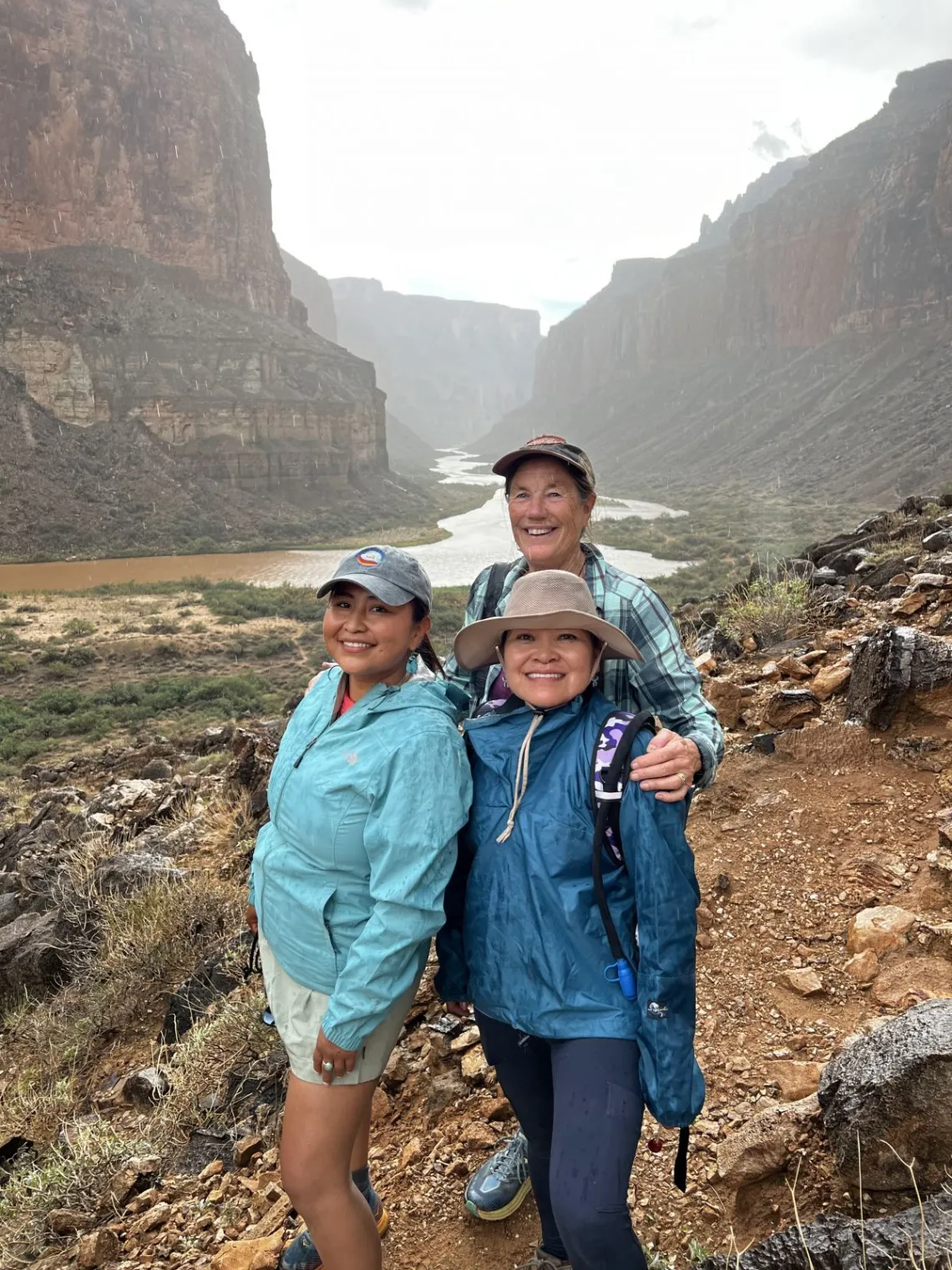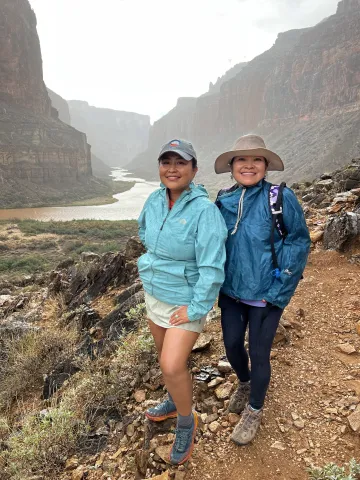Collaborative Project with University of Arizona Advances Indigenous Geoscience Education in the Grand Canyon
With an NSF grant of nearly $150,000, the U of A and partner universities are developing relationships with Native American tribes to advance geoscience education in the Grand Canyon.

Professors Chief and DeVore with collaborating grant professor from UNM, Laura Crossey who also took part in the Grand Canyon Forum.
The University of Arizona, the University of New Mexico (UNM), and Arizona State University (ASU) have received a $150,000 National Science Foundation grant to advance geoscience education among Indigenous tribes in the Grand Canyon.
The project, titled “Developing Partnerships Among Tribes, Geoscientists, and the National Park Service to Advance Informal Geoscience Learning at Grand Canyon,” is led by Karletta Chief, U of A distinguished professor of university outreach, and Cherie DeVore, assistant professor of chemical and environmental engineering. Chief and DeVore are both members of the Navajo Nation.
The NSF-funded project will allow the team to hear valuable input from Indigenous communities on how to Indigenize geoscience education in the Grand Canyon. The project is centered around listening sessions with Native American communities around the Grand Canyon. The researchers have already received letters of support from the Havasupai tribe and Navajo Nation and hope to include other resident tribes along the Grand Canyon.
The listening sessions are an open forum where community members are invited to attend and share their concerns, comments, and needs regarding implementing native knowledge into the Grand Canyon.
These sessions will be held in multiple formats, as the researchers aim to make these conversations as organic as possible. Geotraining, hikes, walkthroughs, and other activities will provide the researchers with opportunities to approach geoscience education in the area, respecting the spiritual and cultural significance of the region while also creating scientific place-based learning opportunities.
"We are doing lots of engagement and communications with the tribes," Chief said. "But it is important that we approach and engage with these communities thoughtfully. We are not here to steamroll them but to listen to them."

Professor Karletta Chief (right) and Professor Cherie DeVore (left) on a boat trip during a Grand Canyon Field Forum.
"These conversations are about coming up with ways to integrate Indigenous knowledge at the Grand Canyon,” DeVore said.
"When we talk about ‘Indigenizing’ education, it's a way to center the perspectives of Native Nations,” Chief said. "Using the surrounding area to understand scientific concepts grounded in the local community's culture, language, and ways of knowing gives deeper insight and brings Indigenous voices to the forefront.”
Project collaborators include UNM professor of geology Karl Karlstrom, UNM distinguished professor of Earth and planetary sciences Laura Crossey, and ASU professor of Earth and space exploration Steve Semken.
The current project builds on earlier NSF-funded work led by Karlstrom and Crossey titled “The Trail of Time,” an interactive walk along a trail at the Grand Canyon where each meter represents one million years in the canyon’s geological history. The trail features exhibits showing how the Grand Canyon formed.
"The education we hope to bring will have implications for both public and academic settings," DeVore said. "But the public and those who visit the Grand Canyon are the priority, so indigenizing exhibits like the 'Trail of Time' is a great engagement opportunity.”
“These parks can be incredibly exclusive. Native peoples are forced to pay for access to culturally significant areas,” DeVore said, adding that Indigenizing these educational exhibits fosters mindful and respectful acknowledgment of the land.
After the listening sessions are complete, the researchers will apply for another NSF grant to start the implementation process with all the feedback from the tribes.
“The effort to develop culturally equitable and inclusive knowledge and place-based learning is critical in garnering historically exclusive places for Indigenous peoples,” DeVore said. “This is an opportunity to highlight indigenous ingenuity and learn about the human experience.”

